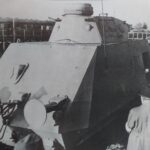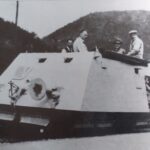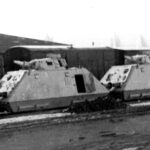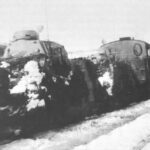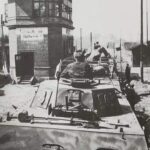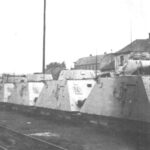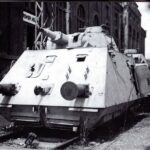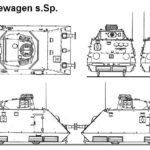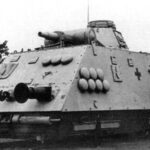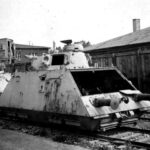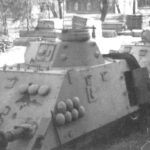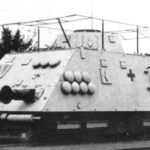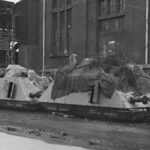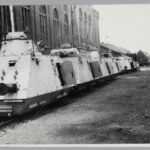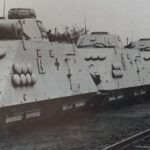The s.Sp heavy infantry armored railcar model is here
The protection of railways was a problem for German logistics in the occupied territories throughout the Second World War. On the eastern front, the large armored trains were adapted to the large Russian spaces, but in the steep reliefs of the Balkans, and their light track substructures, other solutions had to be found. That is why, in 1943, it was decided to build armored railcars that could be used alone or coupled for more specific operations. This solution provided more flexibility depending on operational situations. It was decided to build light railcars le.sP (or leichte schienen Panzerwagen or light armored car on rails) and heavy railcars s.sP (or schwere schienen Panzerwagen or heavy armored car on rails).
The Austrian company Steyr-Daimler-Puch was chosen to build the armored superstructure. One chassis was designed for both models. This choice and the consequent difficulty of adaptation to bear a greater load led to delays for the heavy model. On August 3, 1943, the OKH ordered 100 heavy vehicles and on November 24, 1943 another 100 more. It was expected to set up 16 armored trains of 12 heavy railcars each. The decree for the formation of the first ten trains (No. 201-210) is dated September 24, 1943. The differences with the light railcar were the lenght now at 6,25 m and the armor 20 mm on the sides ; Contrary to the le.sP, it was planned different top superstructures according to the use of the vehicle : Infantry (octogonal observation tower), Pioneer (same tower), Command (same tower with a loop antenna), Artillery (PzIII ausf N tower), Flak (2 cm Flakvierling 38). The speed was 40 km/h and the range was expected 700 km but with a weight of 18 t, this might be far less. Due to the combat compartment in the middle, the engine had to be moved to the front of the vehicle, giving unfavorable weight distribution. Moreover, with a greater lenght of the car, the short whelbase of 2m resulted in wide overhangs at the front and rear, which added to the weakness of the engine, led to poor running properties. All these difficulties ended up in a delivery of the first two armored trains in mid-November 1944, almost 15 monthes after the order. As planned, the armored train s.sP was to be composed of 2 flakwagen, 4 Artillerie wagen, 2 pionierwagen, 2 infanterie wagen, 2 kommando wagen plus cars for Pz38(t) at the front and rear and a ca for one Panhard 204(f). In fact, these two armored trains consisted of only 2 command vehicles, 4 infantry/engineers vehicles and 2 artillery vehicles, the Flak were only installed on front and rear low side cars. Only 6 armored trains were completed and the shortage in fuel was so important that their use was considerably restricted, sometimes a steam locomotive was placed in the middle of the armored train to provide power.


